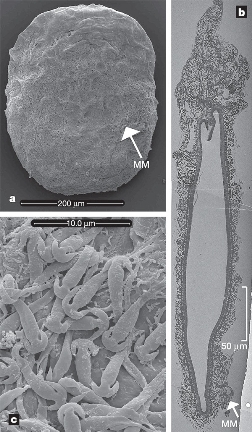
Further reading
Brinkhuis, H., Schouten, S., Collinson, M. E., et al (2006) Episodic fresh surface waters in the Eocene Arctic Ocean. Nature 441, 606-609.
EPICA community members (2004) Eight glacial cycles from an Antarctic ice core. Nature 429, 623-628.
IPCC (1995) Climate Change 1995: The Science of Climate Change. Intergovernmental Panel on Climate Change, Geneva.
IPCC (2007) Climate Change 2007 - The Physical Science Basis: Working Group I Contribution to the Fourth Assessment Report of the IPCC. Cambridge University Press, Cambridge.
Lu, H., Seo, Y-t., Lee, J-w., Moudrakovski, I., Pipmeester, J. A., Chapman, N. R., Coffin, R. B., Gardner, G., & Pohlman, J., (2007) Complex gas hydrate from the Cascadia margin. Nature 445, 303-306.
Moran, K., Backman, J., Brinkuis, H., et al (2006) The Cenozoic palaeoenvironment of the Arctic Ocean. Nature 441, 601-605.
Poore, R. Z., and Matthews, R. K., (1984) Late Eocene-Oligocene oxygen and carbon isotope record from the South Atlantic DSDP site 522. Init. Repts DSDP 73. 725-735. Government Printing Office, Washington.
Shackleton, N. J., and Kennett, J. P., (1975) Palaeotemperature history of the Cenozoic and the initiation of Antarctic glaciation: Oxygen and carbon isotope analysis in DSP sites 277, 279 and 281. Init. Repts. DSDP 29. 743-755. Government Printing Office, Washington.
Sliujs, A., Schouten, S., Pagani, M., et al (2006) Subtropical Arctic Ocean temperatures during the Palaeocene/Eocene thermal maximum. Nature 441, 610-613.
Storey, M., Duncan, R. A., & Swisher, C. C., ( 2007) Paleocene-Eocene Thermal Maximum and the opening of the Northeast Atlantic. Science 316, 587 - 589.
Svensen, H., Planke, S., Malthe-Sørenssen, A., Jamtveit, B., Myklebust, R., Eidem, T. R., & Rey, S. S., (2004) Release of methane from a volcanic basin as a mechanism for initial Eocene global warming. Nature 427, 542-545.
Whittaker, R. H., (1975) Communities and Ecosystems (2nd edition). Macmillan Publishing, London & New York.
Wilf, P., Cúeno, N. R., Johnson, K. R., et al (2003) High plant diversity in Eocene South America: Evidence from Patagonia. Science 300, 122-125.
Zalasiewicz, J., (2006). Climate Change. Geoscientist 16 (8), 28-29.
Zachos, J. C., Röhl, U., Schellenberg, S. A., Sluijs, A., Hodell, D. A., Kelly, D. C., Thomas, E., Nicolo, M., Raffi, I., Lourens, L. J., McCarren, H., & Kroon, D., (2005) Rapid acidification of the ocean during the Paleocene-Eocene Thermal Maximum. Science 308, 1611-1615.
*Jonathan Cowie is the author of Climate Change: Opportunity of Disaster? (1998) the basis of which was the core theme of the 2006 Stern Report. Cambridge University Press has just published his latest climate book, Climate Change: Biological and Human Aspects.